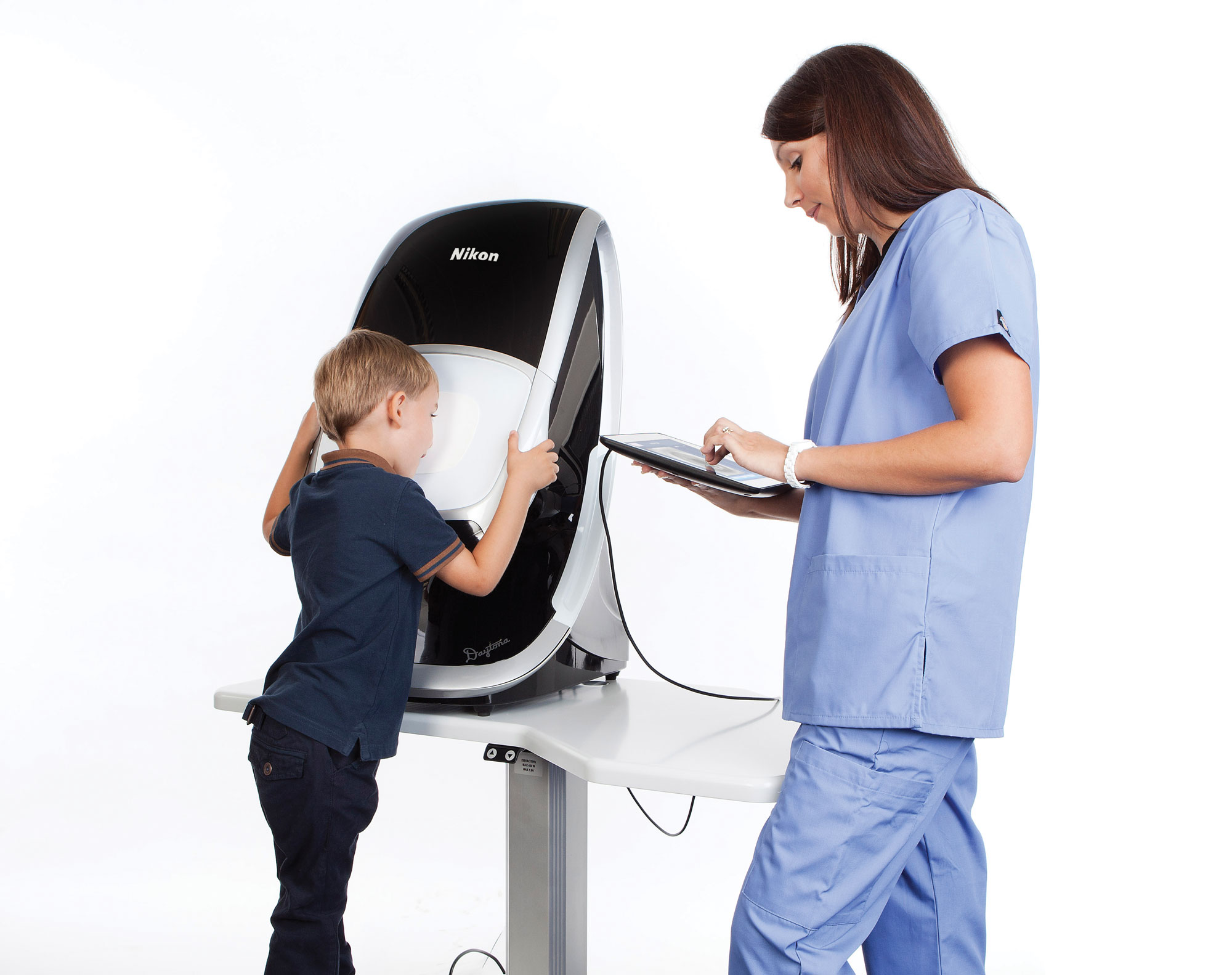Many vision problems begin at an early age, so it’s important for children to receive proper eye care. But when? This question is often asked in regard to the age when a child should receive their first eye exam, and the next question is, how often?
It is recommended by the American Optometric Association (AOA) and eye care providers that infants should have their first comprehensive eye exam at 6 months of age. However, there are warning signs that might prompt screening much earlier such as family or medical history. Children should then receive additional eye exams at ages 3, 5 and 6, or as issues present.
Many common eye problems first develop in young, school-aged children. If left undiagnosed and untreated, these visual problems can disrupt a child’s ability to pay attention in class. Unfortunately, in some cases, children with visual problems end up being misdiagnosed with ADD/ADHD or another type of learning disorder. Hence, it is essential to make sure that your child’s eyesight is in top condition. This ensures that all of their unique needs are met, and that they are able to participate to the best of their ability in school and other activities.
It's important for parents to understand the importance of eye exams, and the utilization of the highest-level technology in pediatric screening. Optos ultra-widefield (UWF™) imaging technology is making great strides in diagnosing and treating eye problems in children and infants. The cutting-edge modalities and ease of operation with an optomap exam may show signs of ocular or systemic disease, often before children and infants become symptomatic.
optomap was founded by Douglas Anderson after his then five-year-old son Leif went blind in one eye when a retinal detachment was detected too late. Although his son was having regular eye exams, routine exams were uncomfortable, especially for a child, which made it impossible for the doctor to conduct a complete exam and view the entire retina. He set out to create a way of non-invasively capturing as much of the retina as possible, in a single capture.
While traditional fundus imaging is a multi-stage effort made more complicated by children and babies’ natural tendencies to become impatient during exams, an optomap image provides a view beyond the vortex vessels into the periphery in a single capture, making the imaging process easier and faster. Results from several published clinical studies suggest optomap as an essential element to the screening and management of pediatric patients.
Set your children up for success and schedule their annual eye exams! To find an eye care professional near you who uses optomap technology, click here.
